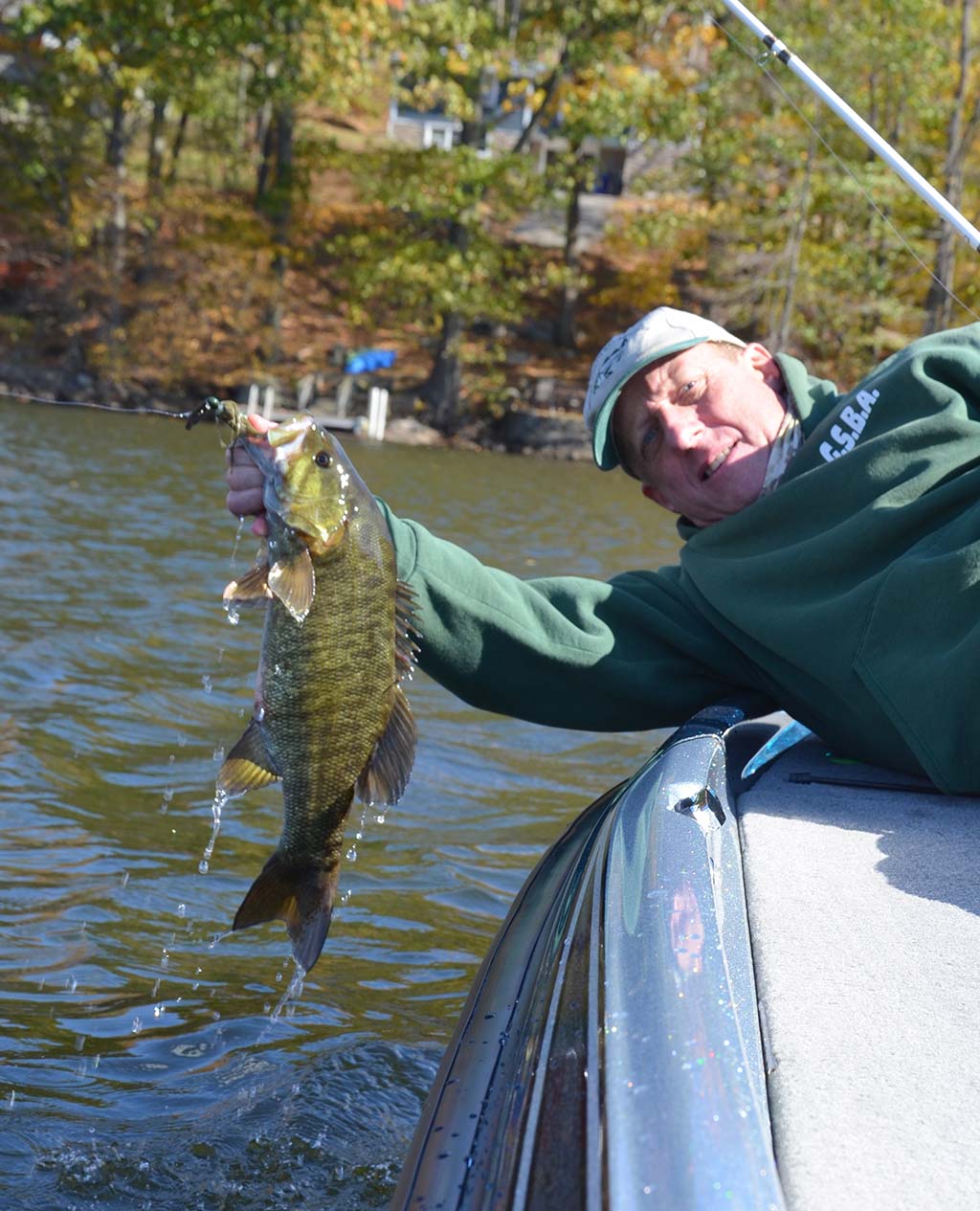
Worm fishing is a patient game but keep in mind that bass are opportunistic feeders
Back in the day, anglers used soft plastic worms on virtually every outing. And, for good reason… they caught fish! I cannot remember a time in my earlier treks when I didn’t have a black or purple 8- to 10-inch jelly worm by Mann’s on the end of my line. I rigged it weedless or with a small split shot to fish it deeper. My largest bass on Long Island back then came from Lake Ronkonkoma and was a chunky 5-pounder, which fell for a purple version of the worm back when the lake’s water table was high.
Fast forward to today’s soft plastics and you can leave just about everything else at home. Anglers have a wide array of choices when it comes to worms. They have Senkos, curly tails, Ned Rigs, extra-long, and many others. You can rig them Texas style, on a lead head, or weightless. It’s not just worms, there are creature baits, soft plastic swimbaits, and grubs for every occasion. Let’s take a look at some of the go-to baits that have worked for me, and a plethora of anglers from back-yard amateurs to the pros on the big circuits.
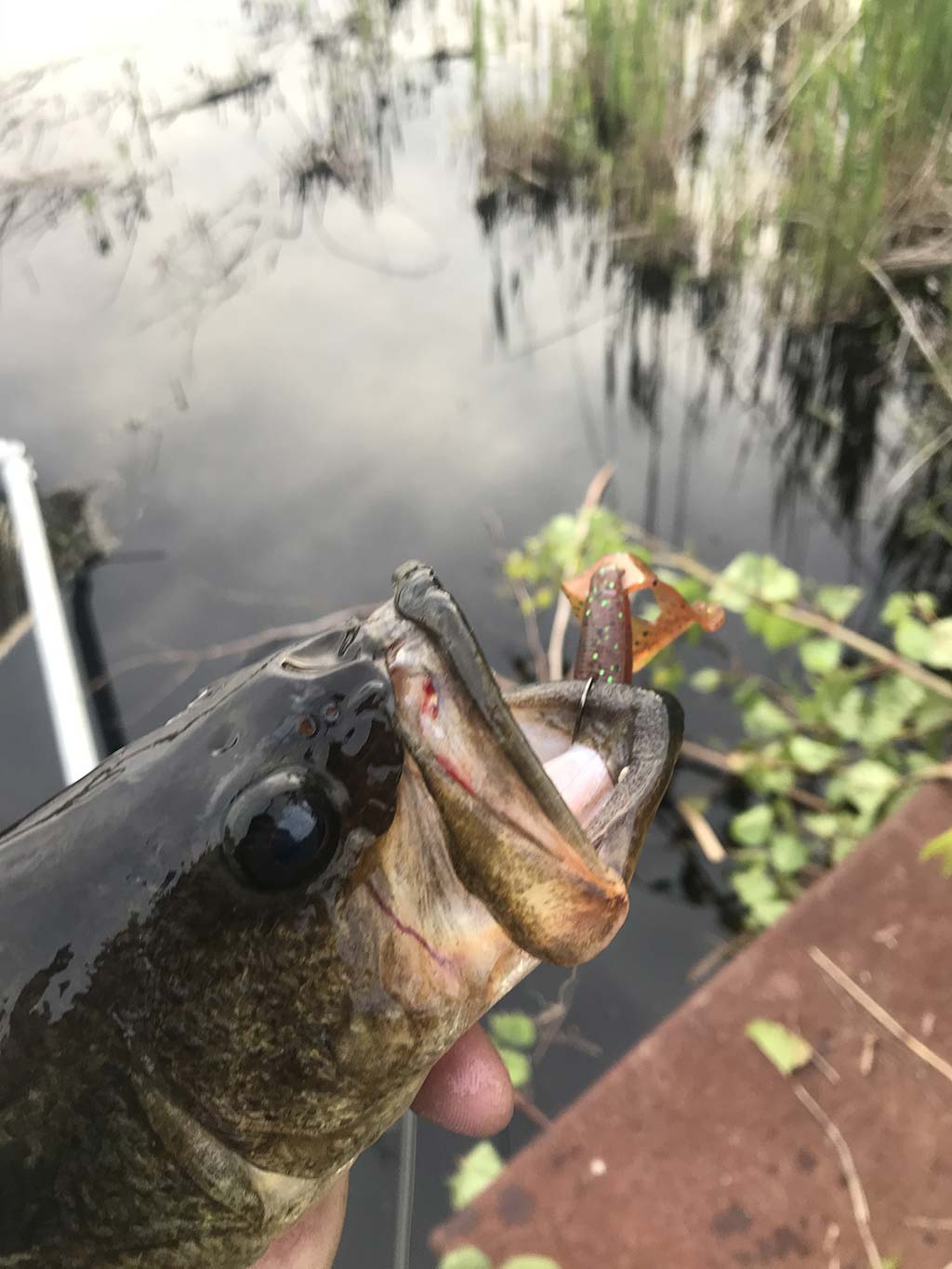
Stick Baits
The stick baits, which is the standard name of every bait that imitates the famous Gary Yamamoto Senko are in the 5- to 6-inch range usually and are commonly fished in the Wacky or Texas-style fashion. It is the easiest to fish, but believe it or not, there is an easier one, which we will cover next. To fish the Senko, most anglers will rig it with a 1/0 hook at mid-point for Wacky or with a 3/0 or 4/0 EWG worm hook for Texas. Make your cast and allow the bait to slowly sink, twitching the rod will also aid in the dance. The twitch however is not needed as the stick worm dances at it falls in the water table. As the bait settles, allow it to sit and carefully watch your line for the slightest movement. A quick hookset and you are in. If you get no takers, reel and make another cast. Another tip is to use an O-ring for fishing Wacky style. Slide the O-ring to the center of the bait and pass the hook beneath the ring instead of through the bait. This will increase the longevity of your worm by many fish.
The Ned
The Ned rig is not new (although it has taken off over the last 10 years or so) as it began in the late 80s after Ned Kehde, an avid Midwestern angler was introduced to a small mushroom style head by Ron Lindner. The mushroom head was the perfect bait for dragging along rocky bottoms and not getting hung up. Twenty years later, Kevin Van Dam introduced him to the new Z-Man plastics and they had an amazing shimmy in the water. Ned used to cut larger baits in half before they started making today’s “Ned” style stick baits. The key with the Ned is a light line and light wire hooks. The bait would easily glide through rocky terrain, and with a weed guard on the hook will make it through vegetation as well. Fishing a Ned is pretty straightforward. Make your cast and slowly drag or hop the bait along the bottom, and wait for a bite. It is similar fishing to the Senko, but the Ned gives more finesse, so line watching becomes even more critical (bright braided line in yellow or pink works great). This rig will always save the day when the bite is slow.
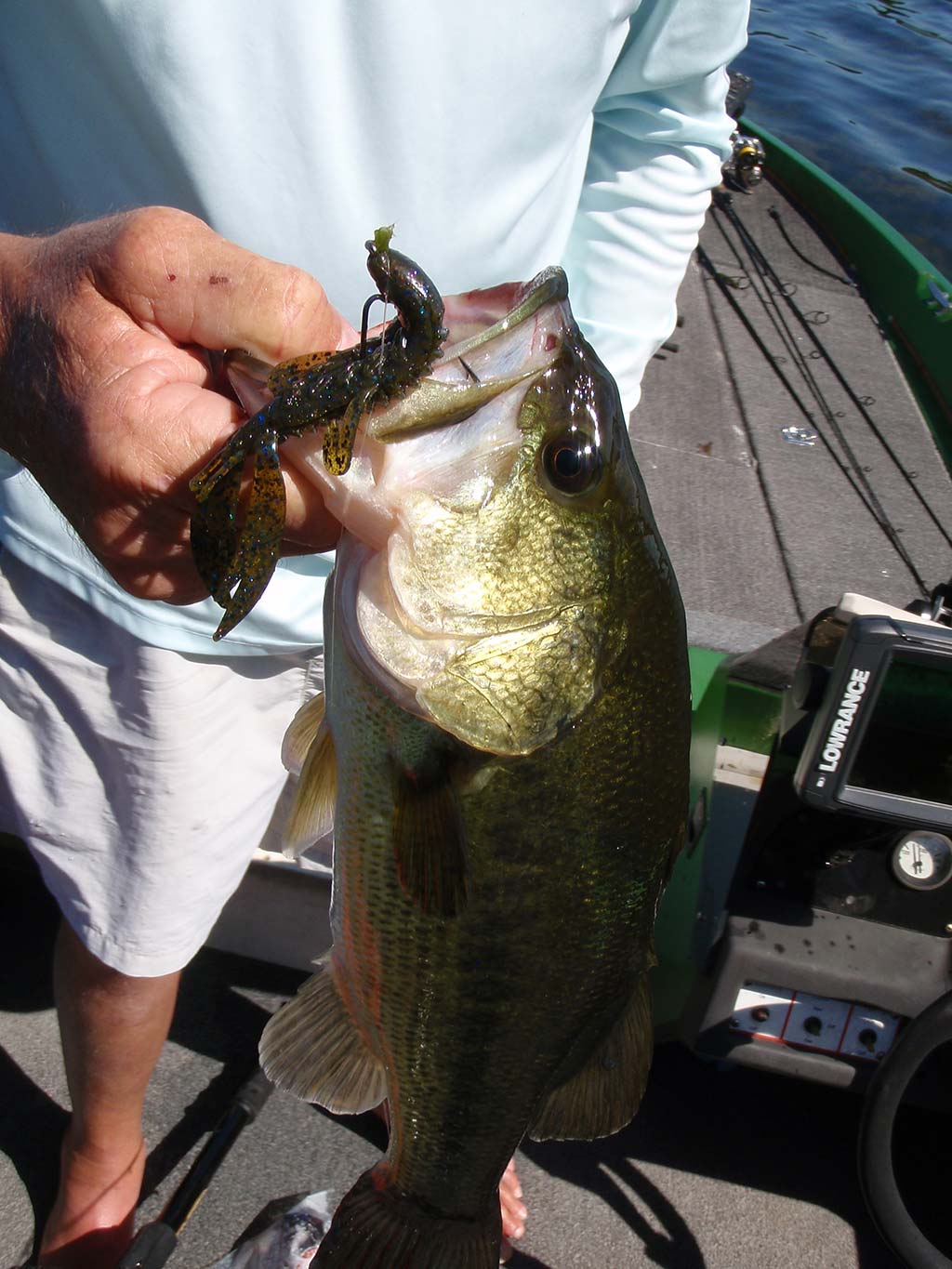
Creature Baits
Creature baits are the big bass weapons used for Texas rigging in the slop – something we have a lot of on Long Island. Texas is only the tip of the iceberg. They fish equally as well on the back end of a jig or a football jighead with a weed guard. These baits offer a large profile in the water and, depending on the style, can be swam to imitate small bluegill, especially on the back end of a Chatterbait or other bladed style bait. For me, I use creatures on almost all my jigs, blade baits and Texas rigged offerings. For the jig, I like a large profile, especially when a bass is chasing larger baits like yellow or white perch, bluegills, or other larger baitfish. The same holds true for the blade baits. The blade baits for me are great when covering a lot of water by fan casting, but also work well bouncing off underwater cover or through lily pad fields. When Texas rigged, just cast and retrieve through heavy slop or lily pad fields and slowly crawl it along the bottom. For this, I prefer EWG worm hooks in the 3/0 to 5/0 range.
The Worm
Moving onto the original style worm, there are options in length and style. For me, I like a good old-fashioned 8- to 10-inch worm with a standard nightcrawler style (looks just like a live nightcrawler) or one with a curly tail for a little more action. Some anglers use huge 12-inch worms, but in our waters, I have found the 8- and 10-inch worms will suffice, and catch large fish. For rigging, I like to Texas rig with a pinned weight against the hook. This allows the bait to be as weedless as possible, which is critical on Long Island. The second method I use is weightless, and this is a deadly big fish approach, especially after dark. A dark-colored weightless worm fished close to cover or drop-offs in any lake will attract the largest bass in the lake. On the hook end, I like a 4/0 EWG worm hook but may go to a 5/0 if the body of water is more open, rather than weed-choked.
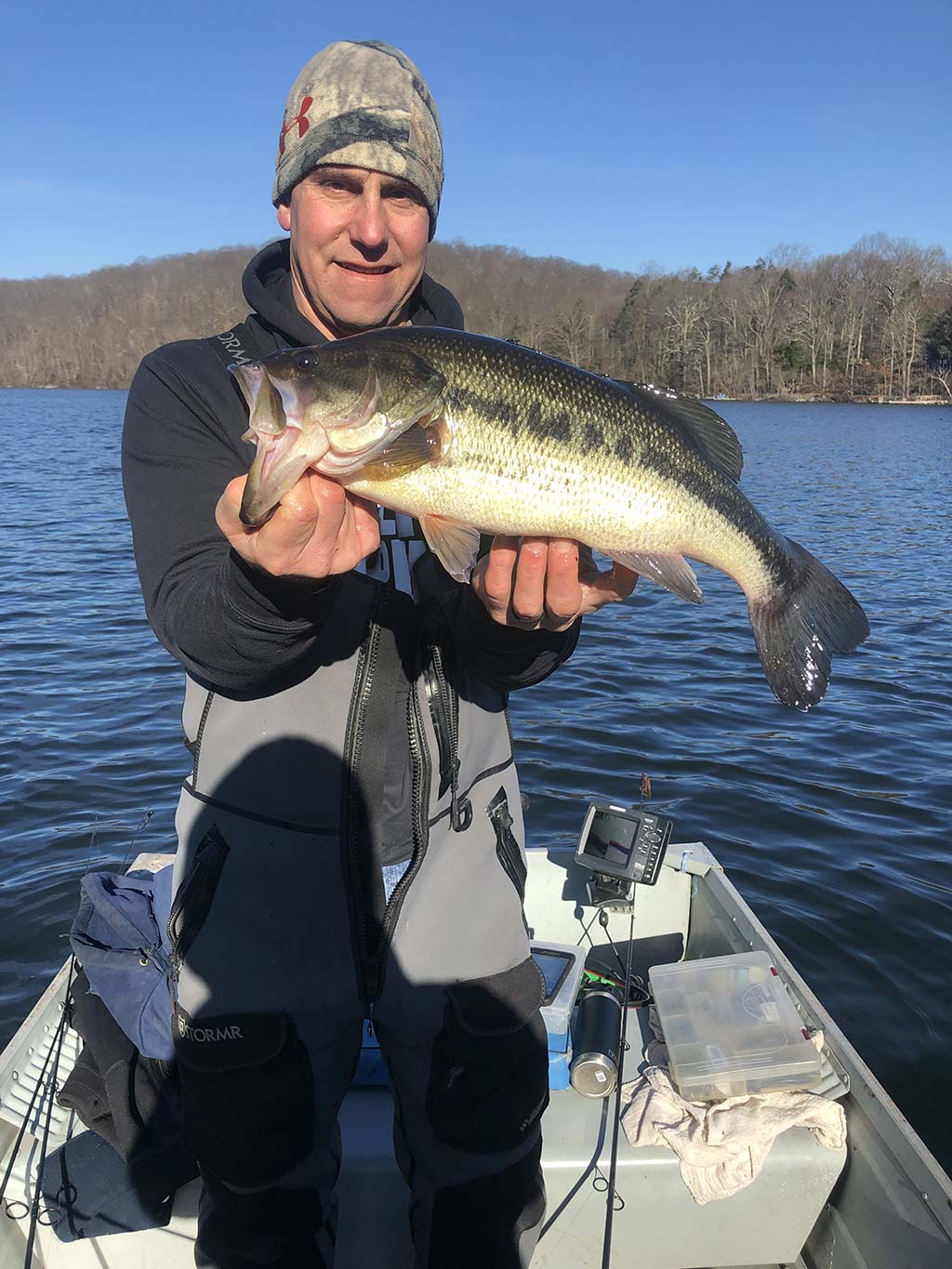
Grubs
Grubs have been around since I was a kid, 50 plus years ago. They are a staple in any avid bass angler’s arsenal. Grubs come in a wide array of colors and sizes, depending on your fishing situation and target-to-bait-size ratio. If I’m looking for bass, and they’re chasing small white perch, I might use a 4- to 5-inch grub on a jighead in lighter colors. For brown bass (smallmouths) feeding on crawfish (yes Long Island does have crawfish) or smaller baits, I may use a 3-inch green or grey hula grub on a 1/8- to 1/4-ounce jighead.
The retrieve method varies slightly, but not a lot. For the chasing of bait, I make long casts, let the jig hit bottom, and then begin a slow, but steady retrieve. For the bottom chasing baits, I will make a cast to structure I picked up on my electronics and bounce it off the cover with slight rod pumps. If you are shore fishing, it will be more of a feel opportunity. Simply cast, allow it to sink, and reel fairly slow and bounce it off the cover you feel. The weedless jighead is best for this method. The jigs I use here have a hook size of 2/0 to 3/0.
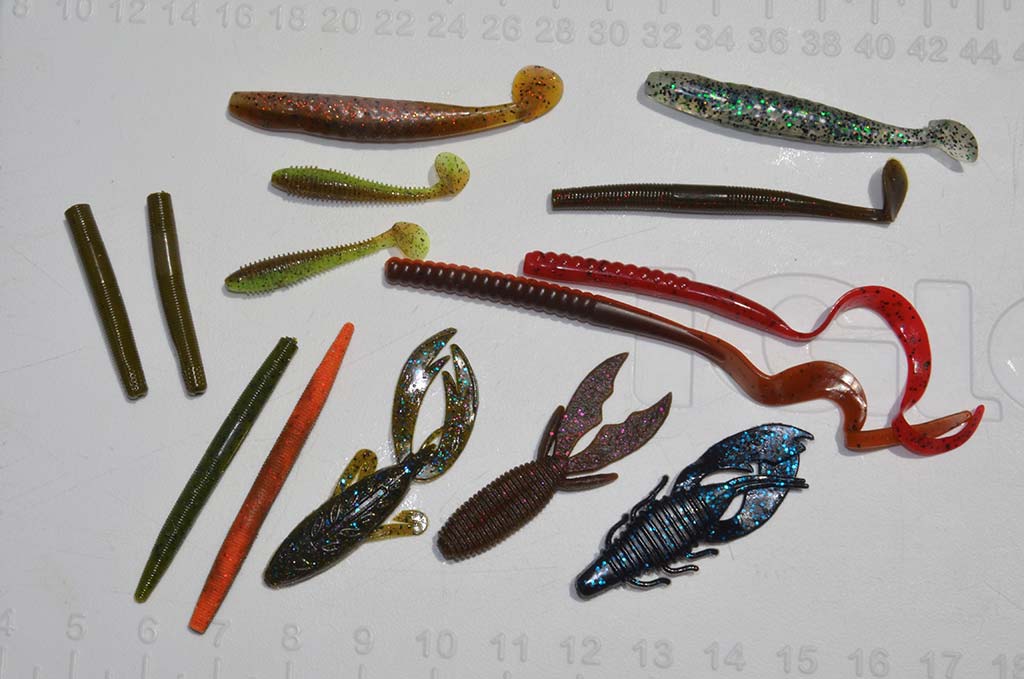
Swimbaits
Whether you use Keitech, Bass Pro, Strike King, or hand-poured, swimbaits catch fish. The key is either knowing exactly what works for a certain body of water or experimenting until you find the right combo. I use a small 2.8- and 3.8-inch Keitech Fat Swing Impact in black, but sometimes a lighter green color. I fish these on weighted Gene Larew or Tommy Biffle style swing hooks. The key is to use the lightest head you can get away with depending on water depth. Another important factor here is a light line. I use 8-pound fluorocarbon with the Power Pro V2 Slick in chartreuse and 15-pound test. This allows visibility while line watching as you slowly bounce the bait off structure, or drag slowly along the bottom. The same hook size as the grubs will suffice for the swimbaits as well.
Worm fishing is a patient game for the most part. You will seldom fish a worm fast. But keep in mind, bass are opportunistic feeders, so a methodically fished bait close to their lair could be the key to success. Most freshwater anglers already have soft plastics in their box for largemouth bass. Having even more will not hurt you in any way. It gives you even more advantages and choices when the fish become picky.



